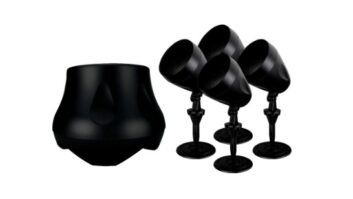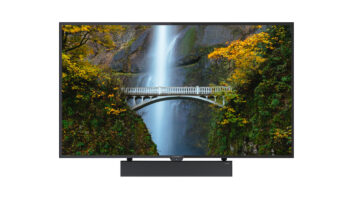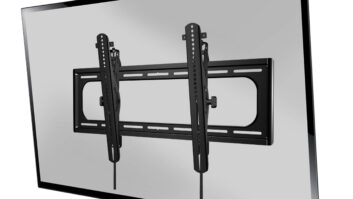There’s something in the air besides more broadcasting signals, and that’s a growing interest in and excitement about outdoor antennas. They have never been an easy retail sale, but that has not kept retailers and manufacturers from the category. Two factors are fueling the market now: the arrival of terrestrial digital TV and the local programming issue.
Every consumer who purchases a digital TV will need an antenna to receive the signal, and suppliers note that an outdoor antenna provides better performance than an indoor version. And, they add, the consumer spending several thousand dollars on a digital TV system is going to want the best reception and will be willing to pay for the outdoor antenna.
At the same time, the confusion over local broadcasting is beginning to clear up, and consumers are realizing they will need an antenna to receive all of the local programming, not just the network programming supplied by their digital satellite carrier.
Both suppliers and retailers are addressing the antenna issues. The CEA Antenna Mapping Program, for example, is designed to help retailers help their customers select the correct antenna for their specific location. The mapping program is also available on Terk’s new website, which was launched February 1.
In addition, suppliers are adding more models and are branching out into new high-tech designs. Outdoor antennas come in all sizes and shapes, ranging from those that are shaped like long poles that can be mounted on the side of the building or on a windowsill to traditional rooftop models with many elements to new high-tech styling.
Two suppliers, Winegard and Channel Master, lead the pack in outdoor antennas, but others such as Terk, Recoton, Zenith, Jasco and Thomson are also in the category and are adding new models.
While some retailers are offering antennas for consumers who want to do their own installations, others are approaching the outdoor antenna business through agreements with installers. One such installer, Buddy Davis of Davis Antennas in Waldorf, Md., pays the retailers a commission for referrals.
“Business is brisk, but it is changing,” he said. “The local programming issue makes it a more complicated sale. We are also starting to see increases because of HDTV, and that is just the tip of the iceberg.”
In Davis’ opinion, an indoor antenna is a waste of time in most cases. “Rule number one in antennas is higher is better,” he said, adding that rule number two is that where the antenna is (the customer’s location) is more important than what it is.
He said that getting the right antenna and getting it installed is a complicated process. “The antenna business is complicated, and digital is a whole different ballgame,” Davis noted. “Customers are looking for a magic pill and in most cases it takes a traditional full-sized outdoor antenna.”
In his 25 years in the business, Davis has found that 50% of antennas are installed by do-it-yourselfers and 50% by a professional installer. “This has not changed since 1974,” he said, adding he expects these statistics will remain the same as terrestrial digital TV becomes a reality.
Whatever the customer decides to do, Davis said the arrival of digital TV will be a boon to the antenna business. “We are starting to see increases now as people add HDTV,” Davis said, “and that’s just the tip of the iceberg.”
Duffy Paul, director of Broadcast Reception Products at Channel Master, agrees that there’s a lot of interest and excitement about outdoor antennas, but adds there’s also a lot of confusion. “The advent of terrestrial HDTV will drive the off-air antenna business,” he said. “It requires an antenna for good quality reception. Local reception is also bringing attention to antennas.”
To help clear up some of the confusion, Paul recommends that retailers use the CEA mapping program to help customers select the proper antenna for their needs.
At Zenith, accessories VP Len Coakley said about 7.5 million indoor units and 2.5 million to 3 million outdoor antennas are sold each year, and outdoor is gaining because of digital TV. “We are seeing a double-digit growth rate in outdoor antenna sales,” he said. “The demand is high because satellite systems still don’t offer enough local coverage.”
Zenith is introducing eight new outdoor antennas this year at retail prices from $19.99 to $199.99. These include five UHF/VHF models ranging from a 12-element metro antenna with a 66-inch boom to a 69-element deep fringe antenna with a 183-inch boom and a 21-inch omnidirectional antenna with DBS mount.
The company is also introducing a line of accessories and mounting kits.
Channel Master and Terk are also introducing new antennas and new accessories packaged for the retail market. In addition, both are featuring new styles in outdoor antennas.
Channel Master, for example, has its StealthTenna at $69.95 suggested retail, and Terk is introducing its TV60 at a suggested retail price of $399.
Terk is also planning to introduce a line of log periodic antennas, which will feature new sleek designs that are “architecturally acceptable,” according to Terk president Neil Terk. He describes the upcoming Terk LP antennas as “an elegant
alternative to conventional Yagi-type rooftop antennas.
“Our goal was clear,” he said, “to re-imagine the rooftop antenna as a high-performance component for the digital TV era.”
Pricing has not been set for the Terk LP line yet, but Terk says it will be “high market value.” Shipping is scheduled for the third quarter.
Meanwhile, Terk is also planning a Yagi-style antenna at $79.99, to be available in the first quarter, along with its Terk Works line of accessories that will be priced at $79 to $99. Initial products in the Terk Works line include a diplexer, multiswitch, in-line amplifier and mast-mounted antenna amplifier. “The weakest links in home entertainment systems today are the installation and signal routing components,” said Terk. “Most of these products were designed decades ago and do not live up to the standards and requirements of HDTV and other digital sources.”
Also new from Terk is the TV55, a 42-inch easy-to-install antenna that can be mounted on the windowsill. Designed to work in the yellow and dark- and light-green areas on the CEA mapping program, the 42-inch antenna uses advanced helical coil technology and has a suggested retail price of $129.95.
Channel Master is also featuring a new line of installation equipment and accessories designed and packaged for the retail channel. The company is now launching 30 SKUs, including dual ground blocks, weatherproof F connectors, crimping tools, diplexers, amplifiers and multiswitches.
“Our branded Digital Satellite line allows consumers the convenience of do-it-yourself installations,” said Channel Master’s Paul.
Thomson’s outdoor antenna line includes two low-profile models, the ANT4100X at $79.95 and the ANT4500X at $149.95. The company is also announcing a new dish designed to mount with the DBS dish, the ANT2050X at $99.95. Also new from Thomson is a traditional rooftop antenna, the ANT3050X at $99.
One issue that the arrival of HDTV is creating is the question of what consumers who are located between DMAs (designated market areas) should do. Some say the use of a rotator solves the problem, but others say using multiple antennas is the best solution.
Davis noted that the digital transmitters are not located near the analog transmitters, “so everyone will have to rotate. A rotator is nice if you have a small number of TVs, but multiple antennas is what most people need today.”
“It is quite common to be two DMAs,” said Paul. “Adding a rotator to an antenna is not that difficult.”
Although he is testing a rotator, Terk is concerned about customer satisfaction, noting that there is a waiting period while the antenna rotates. “I am not sure it will give real customer satisfaction,” he said.













